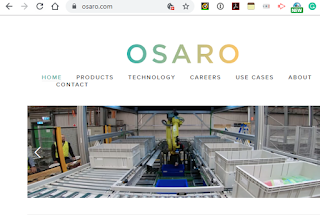Malaysia-based Maxis has selected Huawei Technologies for the provisioning of 5G network in the country.
 As part of the agreement, Huawei will be supplying 4G/LTE and 5G radio equipment and services. Besides having access to 5G technologies, Maxis will able to modernise its existing LTE network to be 5G-ready. Leveraging on existing investments and footprint, Maxis will be able to facilitate faster rollout of 5G services when spectrum is available.
As part of the agreement, Huawei will be supplying 4G/LTE and 5G radio equipment and services. Besides having access to 5G technologies, Maxis will able to modernise its existing LTE network to be 5G-ready. Leveraging on existing investments and footprint, Maxis will be able to facilitate faster rollout of 5G services when spectrum is available.
Additionally, Maxis will have access to insights, standards, products and solutions that would make 5G easier to deploy and operate and introduce new use cases in Malaysia.
The signing ceremony was witnessed by Yang Amat Berhormat Tun Dr. Mahathir bin Mohamad, the Prime Minister of Malaysia at Yayasan Kepimpinan Perdana, Putrajaya. Signing the agreement on behalf of Maxis was its Chief Executive Officer, Gokhan Ogut, while Huawei was represented by Michael Yuan, its Chief Executive Officer.
 As part of the agreement, Huawei will be supplying 4G/LTE and 5G radio equipment and services. Besides having access to 5G technologies, Maxis will able to modernise its existing LTE network to be 5G-ready. Leveraging on existing investments and footprint, Maxis will be able to facilitate faster rollout of 5G services when spectrum is available.
As part of the agreement, Huawei will be supplying 4G/LTE and 5G radio equipment and services. Besides having access to 5G technologies, Maxis will able to modernise its existing LTE network to be 5G-ready. Leveraging on existing investments and footprint, Maxis will be able to facilitate faster rollout of 5G services when spectrum is available.Additionally, Maxis will have access to insights, standards, products and solutions that would make 5G easier to deploy and operate and introduce new use cases in Malaysia.
The signing ceremony was witnessed by Yang Amat Berhormat Tun Dr. Mahathir bin Mohamad, the Prime Minister of Malaysia at Yayasan Kepimpinan Perdana, Putrajaya. Signing the agreement on behalf of Maxis was its Chief Executive Officer, Gokhan Ogut, while Huawei was represented by Michael Yuan, its Chief Executive Officer.


















